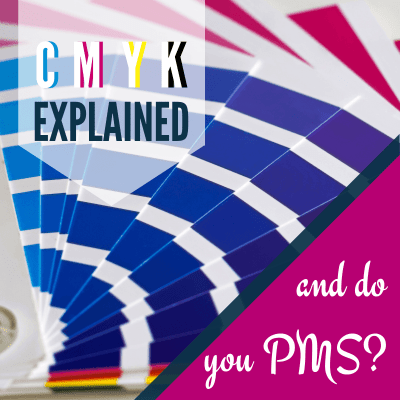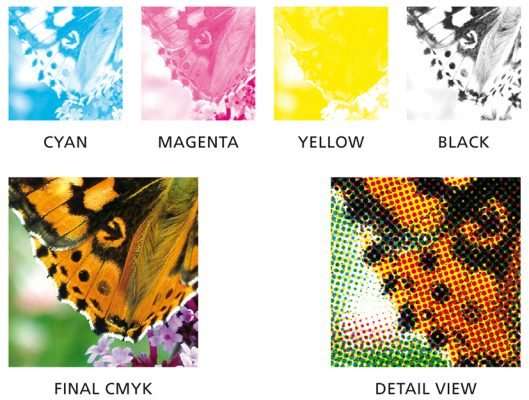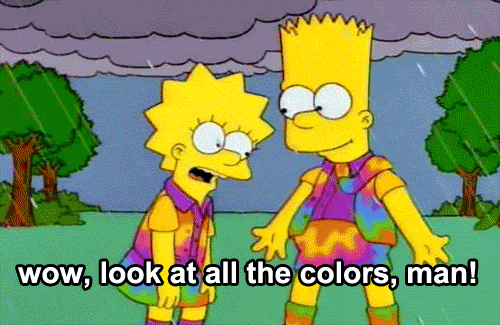In the world of printing, finding the right color is far from an exact science. Each individual ink and printing method gives slightly different results, and matching the colors of a new project with those of a previous one can be difficult. Fortunately. CMYK printing gives very similar results at a high quality. Here’s an inside look at the most popular printing method with everything you need to know about CMYK.

Connect the Dots
CMYK is a subtractive method of printing that relies on layered dots of color to mask the white background of the paper. More ink on the paper means less light that reflects (hence the subtraction).
Inks used in CMYK printing come in 4 colors: Cyan, Magenta, Yellow, and Key (a printer’s name for black, since black is often used to outline an image as a guide).
CMYK inks are applied in set patterns of tiny dots that appear to create a solid color … similar to the pixels on a digital image. Layers of these dots in different amounts of ink create any shade or color. Here’s an example of how the colors work together:

Image via
CMYK colors sometimes translate in terms of percentages. For instance, the blue that we use for our Printing Solutions brand is C100 M30 Y0 K0, or 100%, 30%, 0%, 0%.
Color By Number
CMYK typically produces a higher quality of print job than your standard home office printer, which prints in RGB. RGB uses combinations of Red, Green, and Blue inks to create varying colors and shades.
“RGB is a 3-color process with fewer colors mixing together to achieve a specific color,” says Kristyn Dingman, Printing Solutions’ Director of Marketing. “Because there are fewer colors to choose from, a CMYK print is preferred to achieve a true color.”
That’s not to say that CMYK produces perfect color every time, the way a Pantone ink would. Pantone inks come in pre-mixed colors according to an exact formula that can be replicated with the same results every time. CMYK, on the other, hand, may have some fluctuations in tone, especially when converting from Pantone to CMYK.

“You are taking something that is already made and trying to dissect it and then reinvent it,” Kristyn says. “The same thing happens when you take a CMYK color and convert it to a Pantone. There is the possibility that the colors may look different from one process to another.”
However, Pantone’s level of perfection comes with a heft price tag that simply isn’t practical for most companies. CMYK is a more affordable solution that still produces a very high quality print product. Here at Printing Solutions, we print about 85% of our projects in CMYK and about 15% in Pantone.
Want to know how CMYK printing can help take your business to the next level? Our team would love to show you how! Give us a call at +86-183-0755-2838 today.
